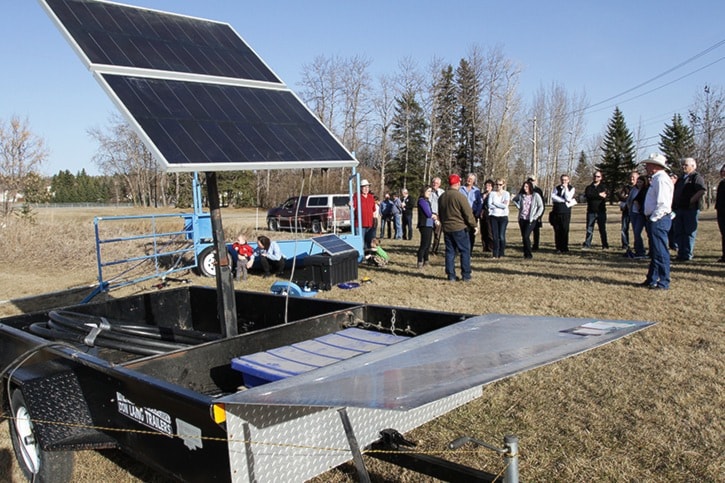Fishermen could probably tell tales of an abundance of fish in the Battle River, but those times have changed and fish are in short — and in some cases — no supply.
A recent study by the Battle River Watershed Alliance (BRWA) showed a low score for the Battle River along Ponoka. To combat that, the alliance started a program that is intended to improve those areas.
They hosted the launch Thursday, April 9, which is called the Ponoka Riparian Restoration Program. The BRWA is working closely with farmers and producers on the benefits of riparian area management.
What is a riparian area?
A riparian area is located between the land and the waterway, explained Kelsey Rawe of Cows and Fish. She says a healthy riparian area will be lush with native plants and vegetation.
“It’s dryer than wet, but wetter than dry,” she stated.
To give attendees an understanding of the plan, the BRWA brought speakers from Cows and Fish and entrepreneurs who developed watering methods for cattle that takes the herd away from the riverbank.
Their main goal is improve upon the riparian area, which in turn helps the nutrients in the water. The BRWA recently conducted a two-year program with farmers along Ferry Point, near Dried Meat Lake, with similar issues to Ponoka and found some success.
Farmers were eligible for a grant to help with input costs, explained Sarah Skinner, watershed planning co-ordinator.
“We wanted to do something that was going to help the area of Ferry Point,” said Skinner.
Initial discussions with landowners at Ferry Point determined they all relied on the river on a substantial level. In a confidential study, the BRWA worked closely with those farmers to help improve the water quality and fish habitat, while maintaining intense agricultural production.
The alliance was able to get permission to use names and examples from the study and Skinner showed some of the results and costs to attendees.
Demonstrations were also conducted right on the riverbank across from Hamilton’s IGA, which were intended to show producers ways to get animals away from the riverbank while ensuring they could still drink water.
New ideas that work:
There were a few different methods presented to attendees:
• Frost free nose pump: this device has no electronic components. Presented by Frostfree Nose Pumps, landowners can dig a well near the river and cattle use the nose pump to drink water.
• Solar mobile trough: created by Sundog Solar, Ponoka County has a demonstration unit as well, farmers can pump water far from the river into a mobile trough.
Shayne Steffen, manager of agricultural services for Ponoka County, said livestock were found to be healthier and weighed more when drinking away from the river. He says their demonstration unit is free for Ponoka County residents to try out.
• Mobile electric fence: to keep cattle out of the river a farmer can use this fence to guide cattle to another location.
For more information or to sign up for the program contact the BRWA at 780-672-0276.
